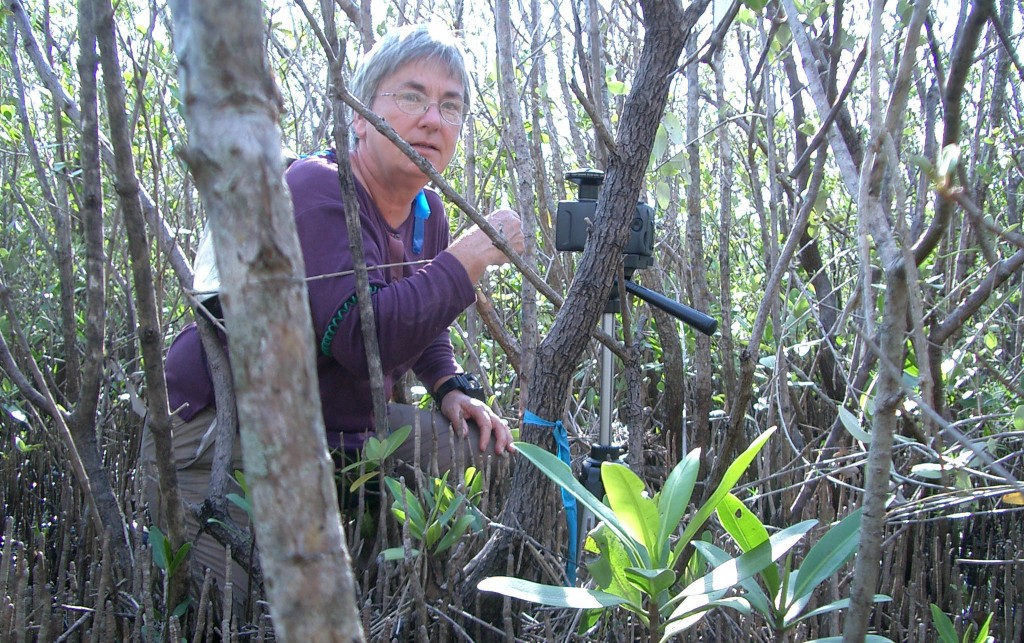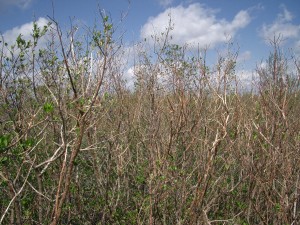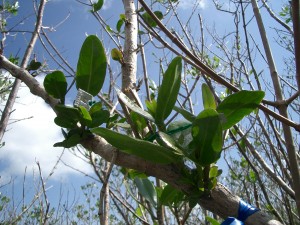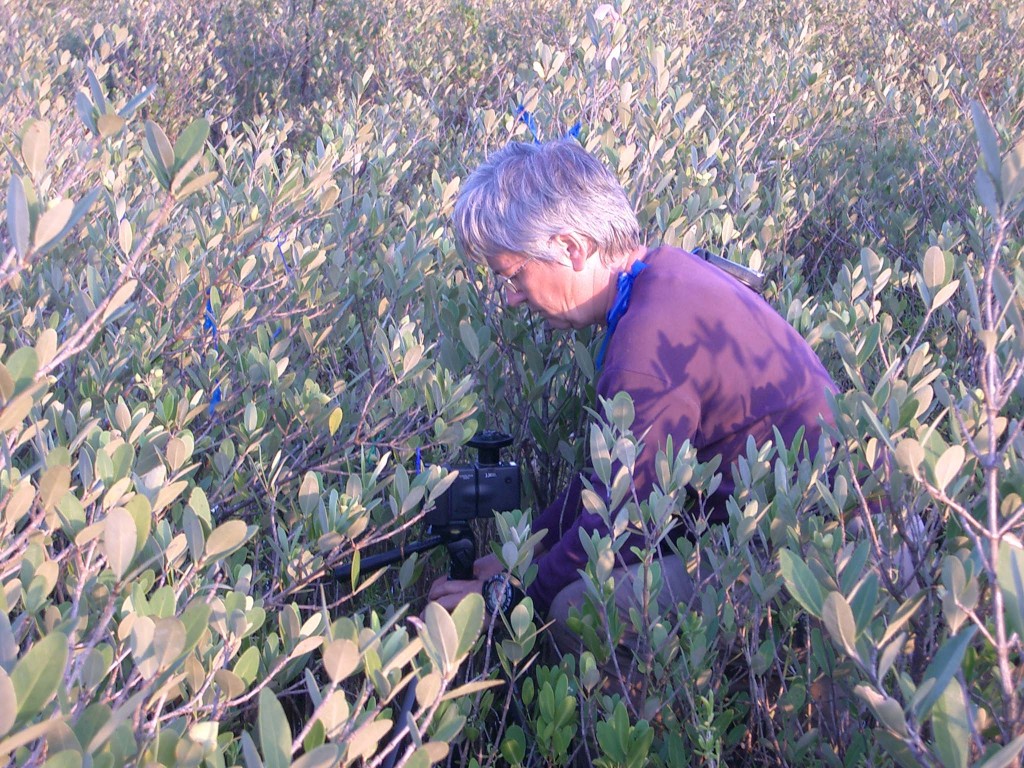by Kristen Minogue
Mangroves—those tangled trees with strange roots common along tropical coastlines—are masters at protecting their territory from hurricanes. So, logically, tall mangroves should be stronger than short ones.
Except when they’re not. Sometimes tall mangroves are weaker, something Smithsonian ecologist Candy Feller discovered after two hurricanes tore through her experiments in Florida.
Her team documented the damage, and their surprising discovery, in a new study published in the journal Ecology.
Feller studies mangroves with the Smithsonian Environmental Research Center. When the hurricanes arrived, she had been running experiments in Florida’s Indian River Lagoon, a 150-mile stretch of barrier islands along the state’s eastern coast. They’re home to manatees, pelicans and bottlenose dolphins, and a patchwork of black, red and white mangroves. But the lagoon is also in danger. Massive algal blooms were killing off seagrasses—and with them, the dolphins and other creatures living there. The root cause: streams of nutrient pollution from farms and sewers.
For eight years, Feller and her colleagues had been testing how all that excess nutrient pollution impacted mangroves, the first line of defense against storms. Dividing the lagoon into plots, they added small doses of nitrogen or phosphorus to some and left others untouched. To all appearances, nutrient pollution helped mangroves grow better, particularly nitrogen. Then in September 2004, two back-to-back hurricanes pummeled the lagoon. The first, Hurricane Frances, had slower winds (103 miles/hour) but was still one of the 10 costliest storms in the U.S. because it took so long to move out. The second, Hurricane Jeanne, ripped through three weeks later with 120-mile-per-hour winds.
“My initial reaction was, we’ve got to get there,” Feller said. “We have got to get there. This is too good of an opportunity. We have to know how much damage.”
They tried to return after the first hurricane, but downed trees blocked the road. So Feller and her research assistant, Anne Chamberlain, abandoned their car and spent hours scrambling over the downed trees to reach their study site and measure the damage. After hurricane number two tore through, they did the exact same thing.
The worst damage was in what Feller calls the transition zone, the middle zone between tall fringe mangroves on the water and smaller “dwarf mangroves” farther inland. “All the lateral branches were broken off. They were just sticks,” she said.
However, it wasn’t enough to measure the initial destruction. The team also needed to know how long it took mangroves to recover. And that process could take years. So they continued the original experiment: adding nitrogen to some mangroves, adding phosphorus to others and leaving the rest alone. Four years passed. They watched and waited.
The mangroves nearest the water suffered the worst assault, losing roughly 80 percent of their leaf area index (a special term for how much leaf material an area has). And yet they all recovered in just over two years.
But the dwarf forests told another story. Dwarf forests grow farther from the coasts. Tides don’t always reach them, and when they do, the nutrients have often been stripped away. As a result, their growth is stunted. The “dwarf” black mangroves in Feller’s study barely reached four and a half feet. But their low stature isn’t a weakness. Their shortness enables them to harbor life that doesn’t flourish on the water’s edge, like wading birds that rely on dwarf mangroves for fishing grounds.
Nitrogen changed all of that. Dwarf mangroves that received nitrogen grew vigorously, reaching more than three feet higher than their brethren. Their height was their undoing. The nitrogen-enriched dwarf mangroves lost almost half their leaf area index and took almost four years to recover. Meanwhile, the other dwarf mangroves around them lost far fewer leaves and returned to normal in a little more than two years.
Feller believes the reason is simple: During the hurricane, most dwarf mangroves were underwater, sheltered from the damaging winds. “They were below the water, which protected them,” she said. However, taller mangroves faced the wind’s full fury. “It’s also faster, more vigorous-growing tissue, so it’s possibly not as tough as older, slow-growing tissue.”
Strangely, a study in Hawaii found the opposite. Though nutrient-fertilized trees there also suffered more damage, they recovered from hurricanes faster than their normal counterparts. However, Florida trees could have faced more stress, including a barrage of droughts in the years after the double hurricane.
One final reason to protect dwarf mangroves: We need them to protect us. A coast may need at least 100 meters of mangroves to buffer against a major tsunami. Along much of the coast in Florida, tall fringe mangroves extend just 20 meters. Dwarf mangroves cover the rest. If they’re getting weaker, they won’t be able to do their job.
“Increased nutrients are changing those dwarf trees into bigger trees,” Feller said. “And the bigger trees are more productive, but they’re more vulnerable too.”






L’abus d’engrais chimiques, en s’infiltrant dans les sols,
peut atteindre les nappes phréatiques et polluer l’eau.
Mais les pollutions du terrain peuvent également être dues à
d’autres activités : largages industriels,
utilisation de produits phytosanitaires par les foyers, pollution accidentelle.
Des opérations de dépollution de sites sont aujourd’hui menées sur tout le territoire français et la réglementation
est de plus en plus exigeante pour éviter
de nouvelles contaminations. Faire appel à un diagnostiqueur pour une étude des sols
permet d’établir une analyse des sols pour ensuite envisager
la dépollution des sols.